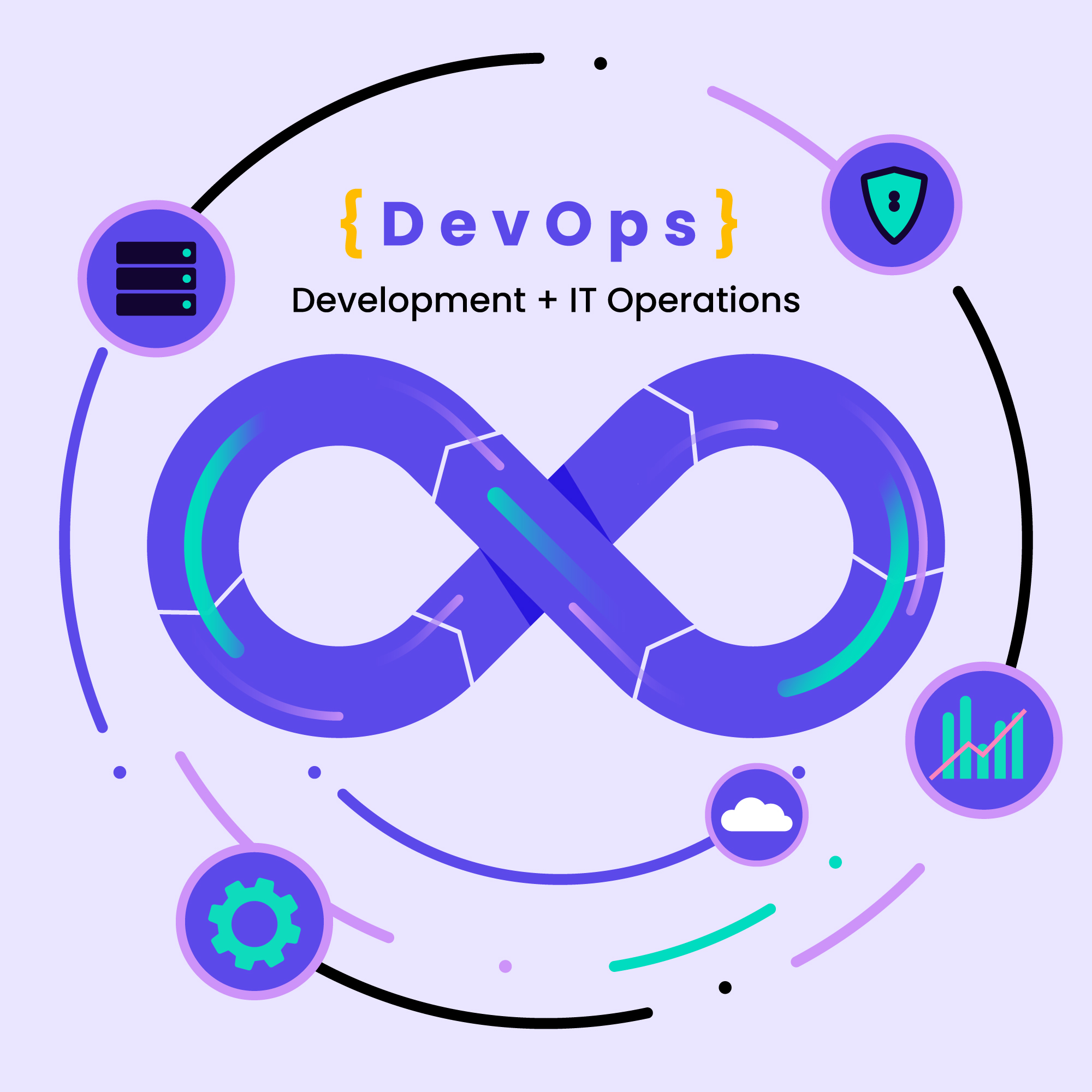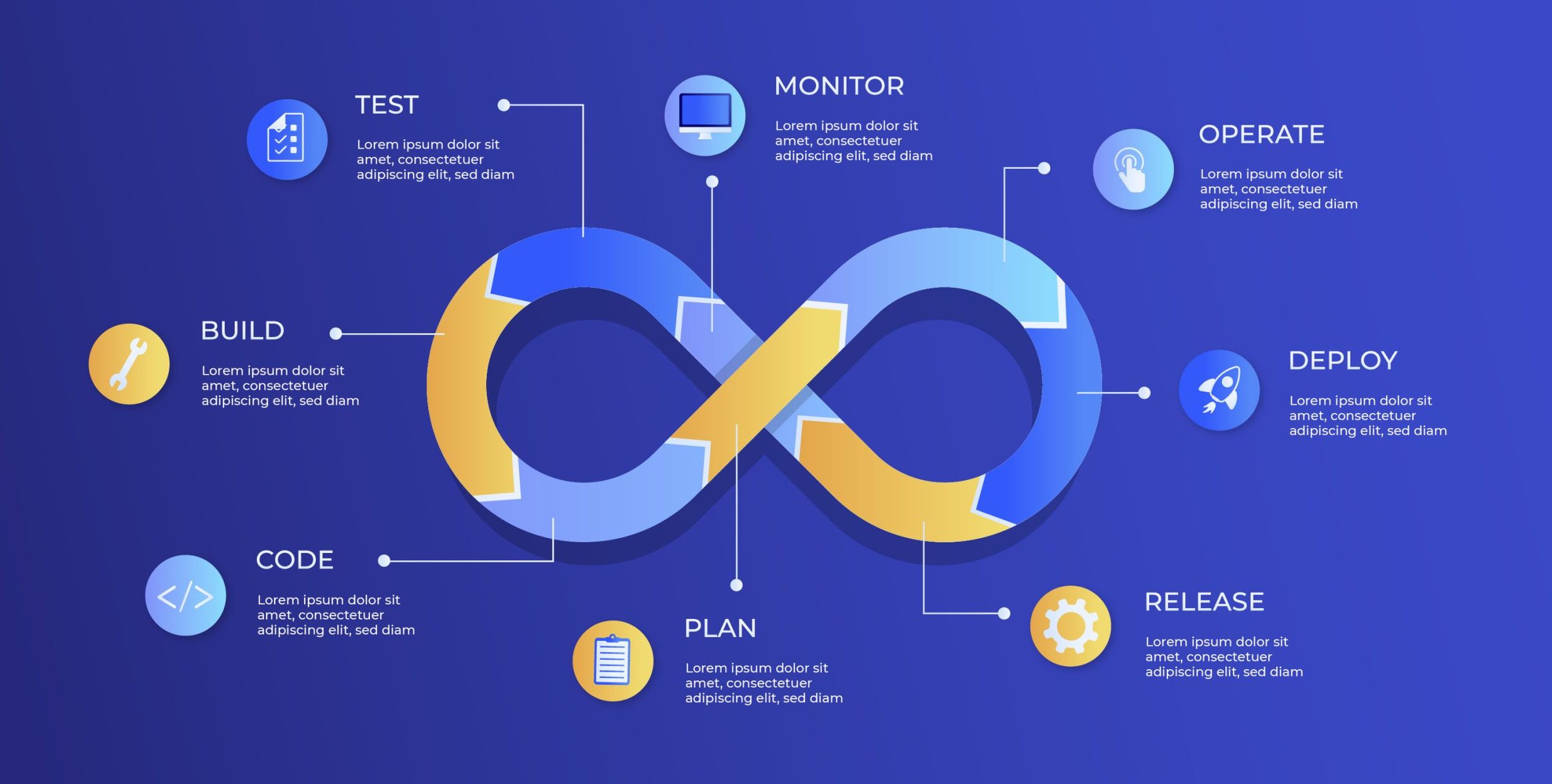In this article, we will be sharing a lot of information about the release management role in DevOps, its benefits, and best practices. Let’s crack on and learn more about it!
What is DevOps release management?
DevOps release management is the maintaining process of the software development lifecycle, from planning, coding, building, and testing stages to deployment across different environments. Generally, release management offers better quality, speed, and efficiency that influences a growing number of successful launch deployments.But how do you measure success? It’s easy. Beforehand, you make a plan, determine criteria, and specify the timeline. If the software is deployed right on time, within budget, with only a few or no bugs, and accomplishes the previously set up goals, then this is a successful launch.
The release DevOps process is unique for each company. It depends on the type and mission of a business. As well as, you already have a pretty good selection of practices, strategies, and tools to choose from and bring changes to it.
Noteworthy, there are the main parties of DevOps release management.
- Product owner.
- Release manager.
- DevOps teams.
- QA/Testing team.
DevOps is a methodology that aids the Developer and Operation teams to collaborate on software development and uses various tools to solve upcoming problems between the teams.

DevOps infinity loop represents the never-ending DevOps release management.
The main distinctive features of DevOps are continuous building, integration, and delivery processes. The development lifecycle represents an infinite loop and involves six stages.This approach tends to influence a faster adaptation process to new updates and modifications. Therefore, you get more consistent deployments. If you have a significant interest in this topic, you can read our previous article about DevOps and its influence on business.
DevOps release management strategies
This section points out the possible strategies to use:- Slow cadence release windows. One or more teams release many products at the same time. They are scheduled at a specific moment, which expands the number of production deployments consistently. And yet, you may get delayed and add some to the cost because of a bottleneck. To make it a bit simple, the bottleneck is getting more requests that are unable to be processed due to limited capacity. It results in severely slow releases and disrupted workflow.
- Release train. This strategy is used in multiple teams that rely on interdependence. Imagine that every team in a large company is a carriage, and the whole deployment DevOps process is a train. And they all work towards the same goal. In this case, it’s easy to perceive a pattern because all the release dates happen to be pre-planned ahead, like a train schedule. The possible issues are facing a bottleneck and a tight schedule again.
- Quick cadence release windows. The main difference between this strategy and slow cadence one is the release slot quantity. This time, the more you deploy, the fewer problems you get. It will reduce the potential bottlenecks that may occur and quickly solve the upcoming potential issues in the software.
- Continuous release availability. Just by using this strategy, you’re getting a prolonged and consistent DevOps release pipeline. Unlike the mentioned above strategies, it’s possible to release at all times depending on the urgency. To implement this strategy, utilize any popular practices and tools, such as automated deployment, testing, etc.
What are the steps of the DevOps release pipeline?
Even though the whole process is a bit different for each company, you can still get an overall idea. These are the main steps of the DevOps release pipeline:- Decide on release conditions and standards. Building a full structure to follow is a crucial factor. First of all, you need to start planning your release at full length. It has to be done from the beginning till the end of the software development lifecycle. Select the criteria, acceptance metrics, and type of release. Then, plan a meeting with stakeholders. Make a checklist with the exact delivery dates, timeline, requirements, and responsibilities. At a later time, it will help to stay on top of things and control unpredictable situations.
- Release building. When your plan is approved, and the essential details are discussed, it’s time to begin the software development. But remember, this is a time-consuming stage. The developer team is building a product while still initial testing to bring some improvements. At this moment, you can begin to track the potential risks and bugs, add some project changes, and automate processes.
- Testing user acceptance. User acceptance testing, or end-user testing, is the last software phase in the development lifecycle. After that, the only thing left is to launch the project. The build software is tested in an environment similar to the production one and has to meet user requirements. The results will show if it is fully functional and how well it is prepared for the real world. This test helps to avoid deploying faulty products and detect issues quickly.
- Release preparation. According to the UAT results, you may face some last-minute vital changes. The Quality Assurance team has to double-check the software and give final feedback. It confirms that user acceptance criteria and business goals are spotted on.
- Deployment release. After presenting the product to the owner, it’s ready to deploy the software in the production environment. Let your users know about updates!

The DevOps release management process is also known as the DevOps release pipeline.
Top DevOps release management practices
There are multiple practices used by companies. Take a look at the most commonly used ones in DevOps release management:✔️ Determine criteria
Decide on the kind of standards that a team will follow. Based on the acceptance criteria, you will get a common sense of the problem, the timeline, and when the application is ready to deploy. Plan the requirements metrics for each specialist way ahead of the testing.✔️ Reduce downtime and bugs
Continuously monitoring, backups, and testing are the keys to reducing the amount of downtime and bugs. Be ready to notice the issues quickly.✔️ Improve staging environment
To explain this better, let’s define the staging environment. The staging environment is an environment where the QA team runs tests and detects errors with deployment. So, for providing a great release and match acceptance criteria, make sure to use an environment identically close to the production one.✔️ Automated deployment
With this approach, you can seamlessly deploy software automatically with high accuracy while still delivering fast releases and monitoring app performance. Plus, it detects bugs super quickly and decreases errors without human intervention.If you get interested in this practice and want some encouragement, do not hesitate to contact us, DevOps services company.
✔️ Slightest impact on users
One of the most prominent aspects of release management is to detect the issues and bugs way before the users. Testing and active monitoring can assist in doing so.✔️ Immutable infrastructure
In this method, the infrastructure components are built unchangeable. It’s impossible to modify the structure, but you can replace it with new updates and design a new configuration. It can help with lessening the errors that may occur while adjusting the server.Benefits of DevOps release management
Without further ado, let’s break down some advantages of release management in DevOps.- Quick and consistent delivery.
- Automated DevOps release pipeline.
- Full traceability and visible changes.
- Correlates customer needs and IT goals.
- Minimizes risk and downtime.
- Creates solid communication between the DevOps teams.
- Fewer negative feedback loops.
- Elevates productivity.
- Flexibility.
Do you have a feeling that the described company is in a similar position as you are? Then you are more than welcome to hire our team. We are the DevOps services company that will safely launch your product!
FAQs
Who is responsible for DevOps release management?
A DevOps release manager is responsible for managing the delivery lifecycle of the software, coordinating the DevOps teams on all the development stages, and finding the best solution based on the situation. The release manager is the one who monitors the progress and makes sure all requirements are met.The position of manager is connected with project management. There is a need to arrange team meetings, manage agendas and help with developing the DevOps release pipeline. To learn more about project management in DevOps and what role it plays, you can check out the previous article.
To become a release manager, you need to have the following set of soft skills:
- Analytical skills.
- Leadership skills.
- Problem-solving skills.
- Decision-making skills.
- Stress management skills.
- Communication skills.
- Teamwork skills.
- Time-management skills.
- Programming skills.
- Excellent knowledge of various methodologies and practices.
- Understanding of software development, application infrastructure, and system architecture.
- Project management experience and comprehension of tools.
What does a release manager do?
A release manager is in charge of many duties and activities, such as:- Planning lifecycle.
- Building a release calendar.
- Creating key metrics.
- Practicing migration planning.
- Identifying and analyzing potential risks.
- Creating executing milestones to achieve.
- Managing, coordinating, and monitoring releases across different environments.
- Building the communication DevOps process.
- Coordinating the DevOps teams.
Conclusion
Here’s a full recap of what we have discussed today:- Release management is used throughout all the stages of development. It speeds up the releases and reduces the number of negative feedback loops.
- There are four release management strategies.
- It’s crucial to plan everything and be transparent with the acceptance criteria.
- By implementing right any of the DevOps release management practices, most likely, you will decrease the bugs and increase the quality of the product.
- The main advantage of this management type is its ability to decrease unpredictable risks during the deployment process.
You can have total control of the release process that ticks all the boxes. If you would like to receive a consultation or any DevOps services, feel free to contact us at any time. We will book you a meeting appointment with the specialist and discuss your circumstances in detail. Get strategic and fill out the form below!